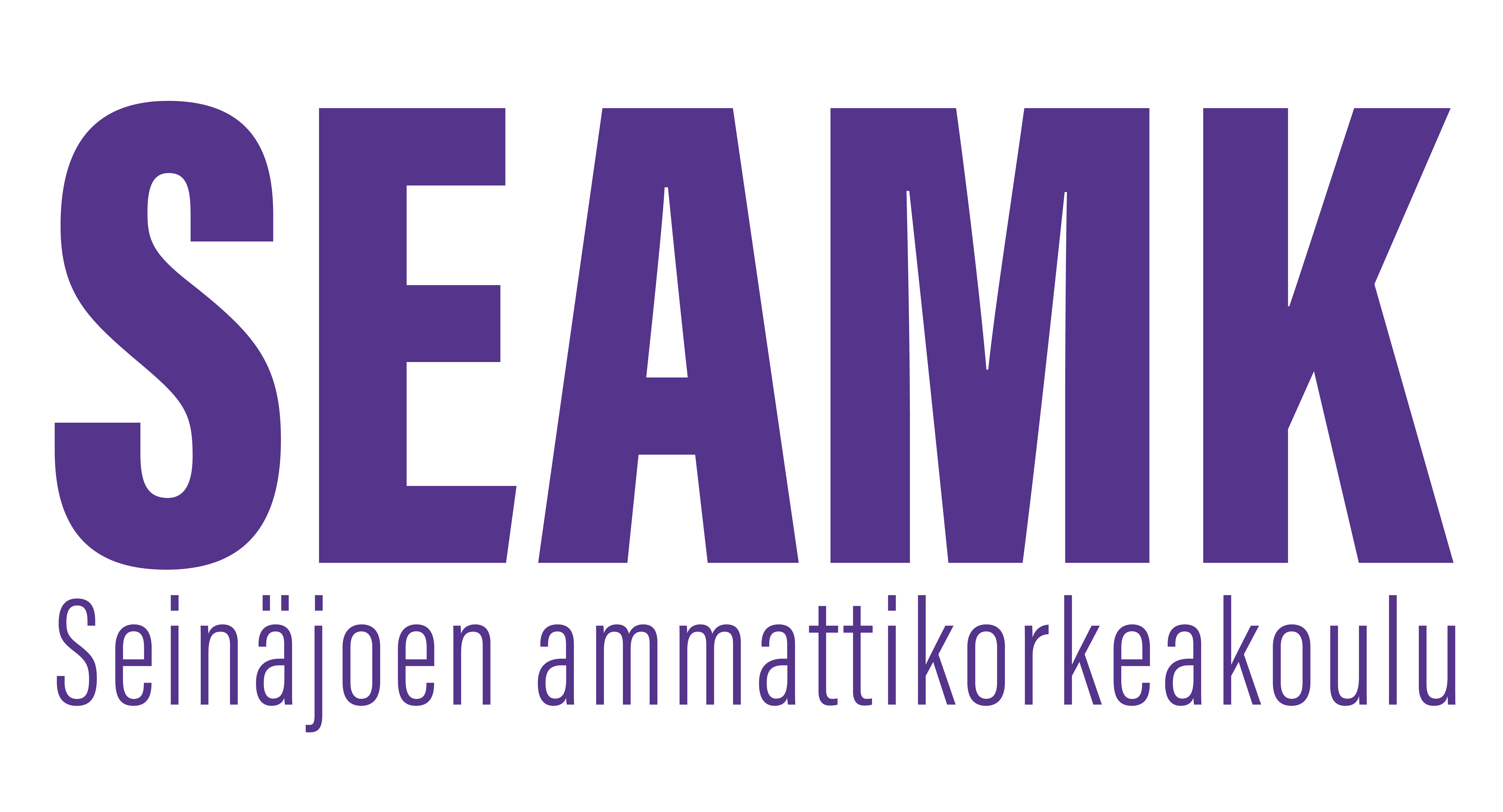Englanti (3op)
Toteutuksen tunnus: STPG301-3010
Toteutuksen perustiedot
- Ilmoittautumisaika
- 25.08.2025 - 07.09.2025
- Ilmoittautuminen toteutukselle on päättynyt.
- Ajoitus
- 12.01.2026 - 08.05.2026
- Toteutus ei ole vielä alkanut.
- Opintopistemäärä
- 3 op
- Lähiosuus
- 3 op
- Toteutustapa
- Lähiopetus
- Yksikkö
- SeAMK Sosionomi ja geronomi
- Toimipiste
- SeAMK Seinäjoki, Kampustalo
- Opetuskielet
- englanti
- Paikat
- 12 - 40
- Koulutus
- Geronomi (AMK)
Arviointiasteikko
1-5
Sisällön jaksotus
• Oral skills (presentations, interviews, different forms of communication, social interaction)
• Writing skills (emails, summaries, learning diaries, essays)
• Reading comprehension (professional texts)
• Grammar as needed
Tavoitteet
Opiskelija osaa esitellä itsensä ja kertoa omasta koulutuksestaan. Opiskelija tuntee sosiaali- ja terveysalan sekä vanhustyön keskeisen sanaston ja osaa kertoa geronomin toiminta-alueista sekä sosiaali- ja terveysalan sekä vanhustyön palvelujärjestelmästä. Hän hallitsee yleisimmissä vanhustyön työtilanteissa tarvitsemansa kielen käytön ja osaa mm. haastatella ja neuvoa vanhusasiakkaita. Opiskelija tutustuu alansa akateemiseen kieleen ja perehtyy akateemisen tekstin lukemiseen.
Sisältö
AMK-opiskelun sanasto, sosiaali-ja terveysalan termistö, vanhustyön englanti, johdatus tieteelliseen englantiin.
Aika ja paikka
Tunnit SeAMKin kampuksella lukujärjestyksen mukaan. Tarvittaessa Teams.
Oppimateriaalit
Opettajan valmistama ja valitsema materiaalit, verkkomateriaalit.
Opetusmenetelmät
Opetus toteutetaan kokonaan lähiopetuksena SeAMKin kampuksella lukujärjestyksen mukaan. Etäosallistuminen ei ole mahdollista. Lähiopetusta ei lähtökohtaisesti tallenneta, eikä sitä korvata etäluennoilla silloin, kun lähiopetusta annetaan lukujärjestyksen mukaan.
Opiskelu rytmittyy työjärjestyksen mukaisten ryhmätapaamisten ja itsenäisesti tehtävien/ryhmässä tehtävien oppimistehtävien mukaan.
Opettajan ohjausta saatavilla lähituntien yhteydessä ja tarvittaessa sähköpostilla.
Arvioitavat tehtävät tehdään itsenäisesti.
Opintojaksolla hyödynnetään erilaisia palautteenantotapoja. Niitä voivat olla esimerkiksi kirjallinen ja suullinen palaute. Lisäksi voidaan hyödyntää myös vertaispalautteen antoa.
Tenttien ajankohdat ja uusintamahdollisuudet
Opintojaksolla on käytössä jatkuva arviointi ja kirjallinen ja suullinen tentti (seminaarit) lähituntien aikana kampuksella opintojakson lopussa. Tarkka aikataulu ilmoitetaan opintojakson alussa.
Opintojaksolla suoritetaan oppimistehtäviä (2-3), jotka palautetaan annettuun päivämäärään mennessä . Kaikki jakson oppimistehtävät tulee olla palautettuina opintojakson päättymiseen mennessä.
Toteutuksen valinnaiset suoritustavat
OPTION 1
Students who have completed corresponding studies at another university or university of applied sciences may apply for credit transfer. The study counselor to be contacted for further information.
OPTION 2
Students who already have the skills and competences that are aligned with the course objectives may apply for recognition of prior learning through competences demonstration. Further information is available from your study counselor.
All alternative ways of completing the course should be discussed with the teacher at the beginning of the course.
Opiskelijan ajankäyttö ja kuormitus
1 op vastaa noin 27 tuntia opiskelijan työtä. Työmäärä kuitenkin riippuu opiskelutaidoista ja aiemmasta osaamisesta.
Opintojakson laajuus 3 op = 81 tuntia opiskelijatyötä.
Arviointikriteerit, tyydyttävä (1)
Opiskelija selviytyy rutiiniluonteisissa, suullisissa ja kirjallisissa vuorovaikutustilanteissa moniammatillisessa työyhteisössä (esim. sähköposti, lomakkeiden täyttö, CV, työyksikön esittely). Opiskelija antaa yksinkertaisia, suullisia ja tarvittaessa myös kirjallisia ohjeita erilaisille asiakkaille /ryhmille, kysyy potilaalta/asiakkaalta tämän nykyiseen ja aiempaan terveydentilaan/ elämäntilanteeseen liittyviä, välttämättömiä tietoja sekä kirjaa potilaan/ asiakkaan antamat vastaukset oikein hoidon tai jatkotoimenpiteiden onnistumiseksi. Opiskelija ymmärtää omiin työtehtäviinsä liittyviä sosiaali- ja terveysalan tekstejä. Hän tekee kielen keskeisissä rakenteissa virheitä mikä vaikeuttaa viestintää ja voi aiheuttaa väärinkäsityksiä ja vaatii asian toistoa, käyttää sosiaali- ja terveysalan perussanastoa niin että tarpeelliset tiedot välittyvät kuulijalle ja lukijalle, ääntää ymmärrettävästi, mutta epätarkkuuksia saattaa esiintyä erityissanastossa, löytää etsimänsä tiedon teksteistä, jotka käsittelevät tuttuja aiheita ja turvautuu yleisesti käytettyihin apuvälineisiin viestinnässään.
Arviointikriteerit, hyvä (3)
Opiskelija viestii suullisesti ja kirjallisesti moniammatilliselle työyhteisölle tyypillisissä tilanteissa (esim. puhelinkeskustelut, osaston ulkopuoliset konsultaatiot, suullinen ja kirjallinen raportointi, suullinen esitys esim. vakuutusasiakirjat). Opiskelija selittää ja perustelee yksilölliset potilasohjeet sekä kertoo tavallisimmista toimenpiteistä ja tutkimuksista, selvittää potilaan/asiakkaan tämänhetkistä ja aiempaa terveydentilaa/elämän tilannetta ja tekee tarvittaessa tarkentavia kysymyksiä, kirjaa potilaan/ asiakkaan antamat vastaukset oikein hoidon tai jatkotoimenpiteiden onnistumiseksi sekä vastaa potilaan/ asiakkaan esittämiin kysymyksiin. Opiskelija käyttää rakenteita pääosin oikein ja korjaa itse kielenkäytön virheitä jos ne ovat johtaneet väärinkäsityksiin, käyttää hyvin sosiaali- ja terveysalan keskeistä sanastoa ja melko hyvin oman erityisalansa sanastoa, pyrkii viestimään tilanteen edellyttämällä tyylillä, ääntää melko luontevasti ja selkeästi, löytää silmäilemällä tekstin pääkohdat erilaisista sosiaali- ja terveysalan teksteistä ja käyttää eri keinoja viestinnän tukena.
Arviointikriteerit, kiitettävä (5)
Opiskelija viestii täsmällisesti ja tarkoituksenmukaisesti, suullisesti ja kirjallisesti englannin kielellä moniammatillisessa ja -kulttuurissa työyhteisössä vaativissakin vuorovaikutustilanteissa (esim. palaverit, hoitoneuvottelut ja palautekeskustelut). Hän esittelee eri vaihtoehtoja luontevasti ja monipuolisesti asiakkaiden/potilaiden ohjaustilanteessa ottaen huomioon potilaiden/ asiakkaiden kulttuuritaustan. Opiskelija haastattelee asiakkaita/potilaita tilanteen edellyttämällä tavalla ja viestii myös haastavissa ja odottamattomissa asiakas-/potilastilanteissa ammattimaisella tavalla. Opiskelija käyttää monipuolisia rakenteita ja hallitsee ne lähes virheettömästi, käyttää täsmällisesti laajaa sosiaali-/terveysalan kieltä mukaan lukien oman erityisalansa terminologian, ääntää selkeästi ja luontevasti, viestii tilanteen edellyttämällä tyylillä, hahmottaa nopeasti tekstin sisällön arvioidakseen kriittisesti lähteen luotettavuuden ja käyttää tehokkaasti eri keinoja viestinnän tukena.
Esitietovaatimukset
Edeltäviä opintoja ei tarvita.
Lisätiedot
• The course is B2 level according to the European Framework of Reference for Languages.
• Lessons are in campus (or online if necessary) according to the timetable.
• There is no hybrid option (some students on campus, some online).
• Mandatory attendance – at least 80%.
